Inside: Do you want to raise kind kids? Then you also need to know how to help your kids to be includers, welcomers, a person who invites others to join in. It’s the highest form of kindness there is.
“Do you want to play with me?”
My daughter was playing a game with a friend while another little boy stood off to the side and watched them play.
Both kids looked up and saw him watching them.
But at 6 years old, no one knew what to do next.
So the little boy walked away and sat with his mom while my daughter and her friend continued their game.
I paused my daughter’s game and asked her how the little boy probably felt watching them play but not being asked to play too.
So my daughter went over to the boy, asked him to join in, and they all played together until it was time to clean up.
In that moment, my daughter was an includer.
Sure, my daughter needed the reminder, the help and the support to know what to do.
And her little egotistical brain needed a reminder to be thoughtful of those around her and empathize with his feelings.
She wasn’t being mean, or unkind, or thoughtless.
She simply didn’t know what to do.
So just like we have to teach our kids how to be kind, and how to be mindful of others around them, we also have to teach our kids how to invite others to join in.
Because there are simple ways to teach our kids to be an includer.
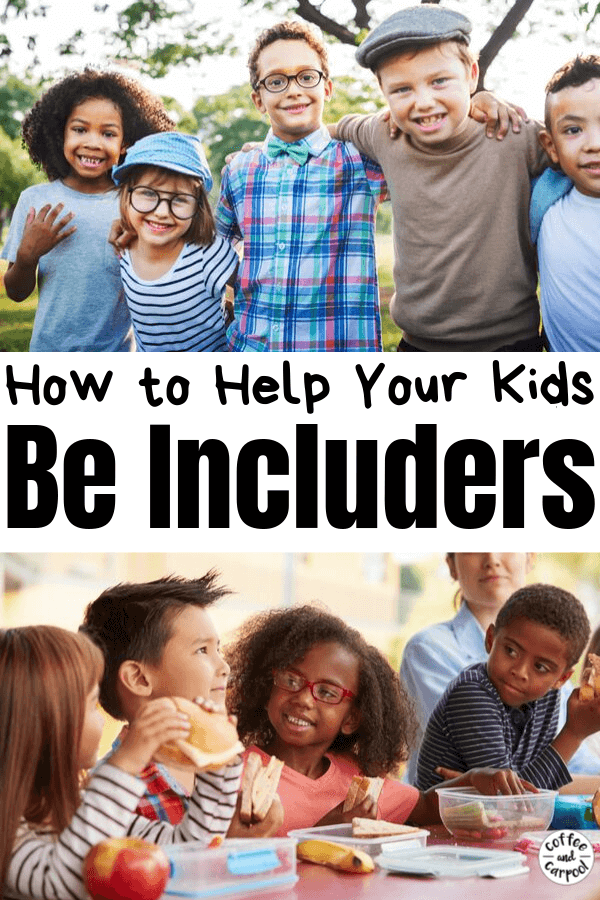
Why do kids need to be an includer?
We are all part of a community.
Actually, we’re parts of lots of communities: our family, our classroom, our sports teams, our Scouting troops, our school, our neighborhood, our clubs.
And being a member in any community comes with responsibility.
It is our responsibility to help those around us who need it.
It is our responsibility to spread kindness and compliments and smiles.
And it is our responsibility to make sure other people feel welcomed and safe.
Related: Now is the Time to Raise Kids Who are Includers
Raising kids who value this and prioritize this is essential. It’s so important to us, we’ve made being kind one of our only two family rules.
Because when our kids are kind, they make the world a better place. For themselves and for others.
Related: How to raise kind kids
Did the moment my daughter invited the boy to play in the game make the world a better place?
Maybe. Maybe not.
But when we take the time to include others, to make sure they feel welcome, we not only bully proof them, we also make sure they’re not alone (unless they want to be) and don’t feel lonely.
It’s one of the highest forms of kindness there is when we can pause what we’re doing, look around, and welcome others to be part of a group.
Even if it’s a group of two.
Related: Is your kid an includer? Here’s why they should be
And, teaching my daughter to be an includer in that instance was valuable for my daughter. Next time she sees someone on the sidelines she’ll remember what to do.
She’ll remember to be an inviter, a welcome, an includer.
Related: Remind Your Kids to Be Includers with These Lunchbox Notes
How to Help Your Kids Be Includers
I was lucky enough to be standing next to my daughter when the little boy was accidentally left out.
I could guide her through the moment and walk her through it.
But that’s not always an option.
Most of the time, we have to prep our kids ahead of time so they know how to be includers when the occasion arises when we’re not with them…namely at school.
Here are ways to invite other kids to not be alone we can teach our kids:
1. Partner up with the kid in class who has no partner
2. If you already have a partner for a project and someone else asks to be your partner, respond with, “Thank you, but I already have a partner. Let’s be partners next time.” And then help them find a partner.
3. Reach out to kids outside of your circle of friends and ask them to join in the game or the group.
4. Invite kids who are alone at recess to play with and your friends.
5. Ask if you can play with a kid who is standing alone. It’s okay if you don’t know them. And it’s okay if you’re not already friends with them.
6. If you see someone sitting by themselves, ask if you can join them or ask if they want to join you at your table.
7. Introduce yourself to the new kid. Ask them questions so you get to know them a little better.
8. Introduce the new kid to your friends. Once you know your new classmate, make sure your friends know them too.
9. If you see someone struggling, ask if they need help.
10. Before you sit down, scan the lunchroom to see if anyone is sitting alone, then join them.
11. If your school has a Buddy Bench, check it as you play. When you see someone there, go and invite someone to join in.
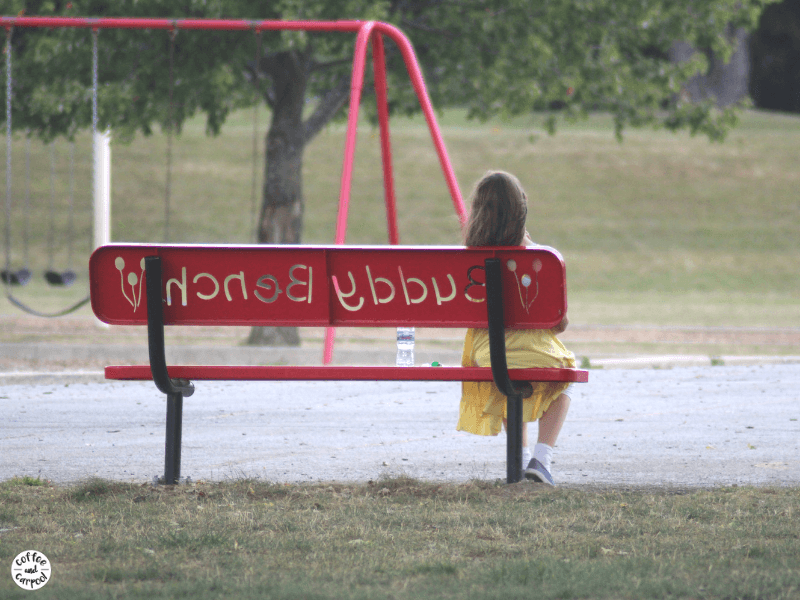
12. Sit next to someone on the bus. Try to sit next to the student who often sits alone. Make room next to you on the bus so someone else can sit down.
13. Offer to walk home with the new kid and make sure they know their way. Or walk out to the carpool or bus line with them.
Other resources to help kids be includers:
- Kindness books about inclusion
- Kindness Pencil Toppers (for everyone in your kids’ classroom)
- Inclusion Bingo
- Kindness Promise
Teaching kids to initiate the conversation
Often times our kids feel too shy or too introverted or too timid to be the first to start a conversation.
And I get it.
It takes courage to introduce yourself to someone new.
It takes confidence to ask if you can join someone.
So initiating a conversation usually takes practice.
We can talk about it with our kids with these Includer Kindness Discussion Starters.
And we can role play with our kids and give them ideas of how they can interact with kids around them so they are includer more often.
Phrases to teach our kids to help them be includers:
- Can I play with you?
- Do you want to play with me?
- Want to eat lunch together?
- Come sit with us!
- Join us!
- Do you want to hang out?
- Can I sit with you?
- Hi, I’m ____. What’s your name?
- Come play kickball with us!
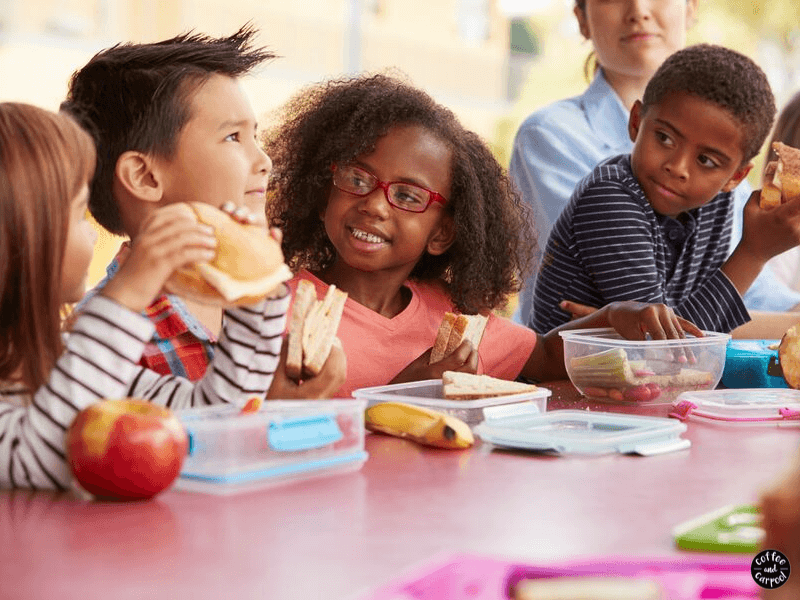
Quick Disclaimer: People often ask me, does my child need to be friends with everyone? If I’m raising them to be kind, do they have to include everyone?
Preschool teachers everywhere may cringe, but I don’t insist my kids are friends with everyone. That only sets them up for failure to be in relationships that are not healthy.
I teach my kids they need to be kind to everyone.
And they need to be friendly to everyone.
Which means in a group setting, everyone gets to play.
Including the boy over on the bench sitting by themselves.
But do our kids need to go out of their way to include the kid who is always unkind to them? To the child who exhibits bullying behavior?
No, they don’t.
Our kids don’t need to be doormats. They don’t need to put themselves into physically or mentally unsafe situations. They don’t need to set themselves up to be pushed around or manipulated or intimidated.
With that said, that doesn’t give them permission to be unkind or show bullying behaviors in retaliation. Our kids can be mad without being mean back.
Related: How to Help Our Kids Deal with Unkind Kids
Help Kids Avoid Unintentional Exclusion
Being left out or feeling left out is, unfortunately, a normal part of life.
It happens to all of us, often unintentionally.
No one thought to pull us into the group photo.
We were the last one to be picked as a partner and there was an odd number in the group.
We didn’t get the birthday invite everyone else got.
It stings. It’s hurtful. And it stays with you, years later.
But a lot of it is avoidable.
And we can teach our kids how to avoid hurting someone’s feelings by leaving them out on accident. 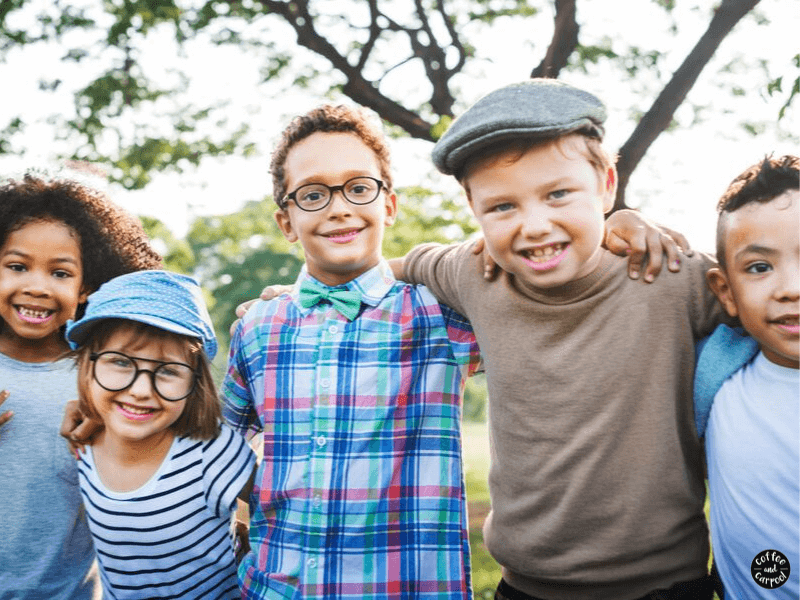
Ways to avoid unintentional exclusion:
1. Don’t talk about party in front of people not invited.
This goes for the host or hostess and the guests. We don’t talk about parties because not everyone was invited. We can be excited for the party without making others feel left out.
2. Then after the party or playdate, refrain from talking about the event not everyone went to.
It’s okay our kids had a blast at the sleepover or the fun trip, but again, not everyone went. Talking about what you did in front of those who didn’t attend can be hurtful.
3. In a group, don’t turn your back on someone who is next to you.
This is super important to teach our tweens and teens because if they physically turn their hips and stand in a way so their back isn’t towards someone, they’ll physically leave room for someone else to join in.
4. Don’t ignore someone’s ideas or suggestions.
Feeling like no one listens to your ideas or your stories or your wishes can feel lonely and isolating even if you’re standing in a crowded room. We can teach our kids to listen to their classmates and friends. Ask them what they want to play and then play that.
5. For our tweens and teens with social media: don’t post pictures that include 2 or more friends if not everyone in your group was there.
Social media is a tricky, slippery slope and for us, for now, my tween has no social media accounts. If your child does have social media, teach them the social etiquette rules to help them avoid hurting their friends’ feelings.
Because teaching our kids to be includers has real power.
And it has positive consequences for both ourselves and the people we include.
But it starts with us parents explaining what an includer is and teaching our kids how easy it is to be one.
And it usually starts with, “Do you want to play with me?”

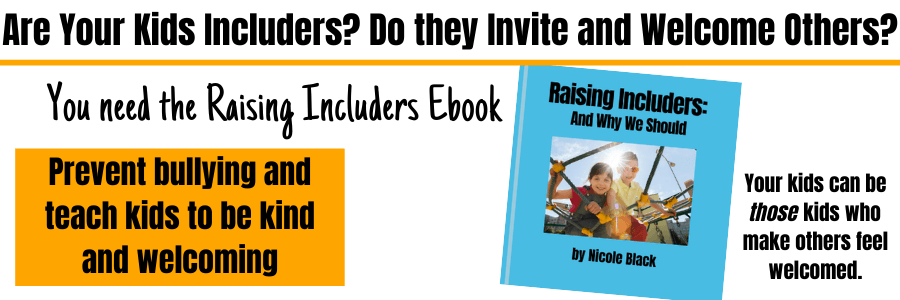

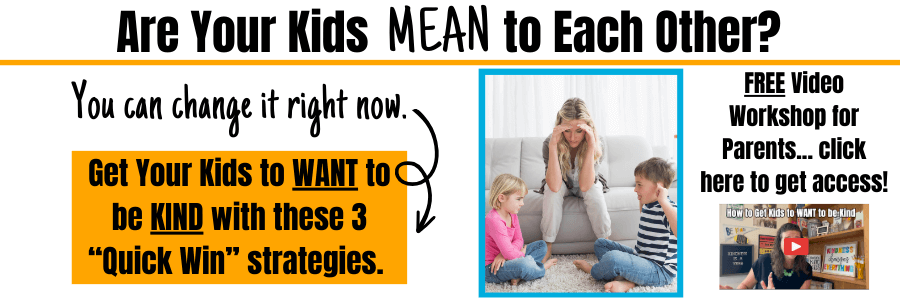

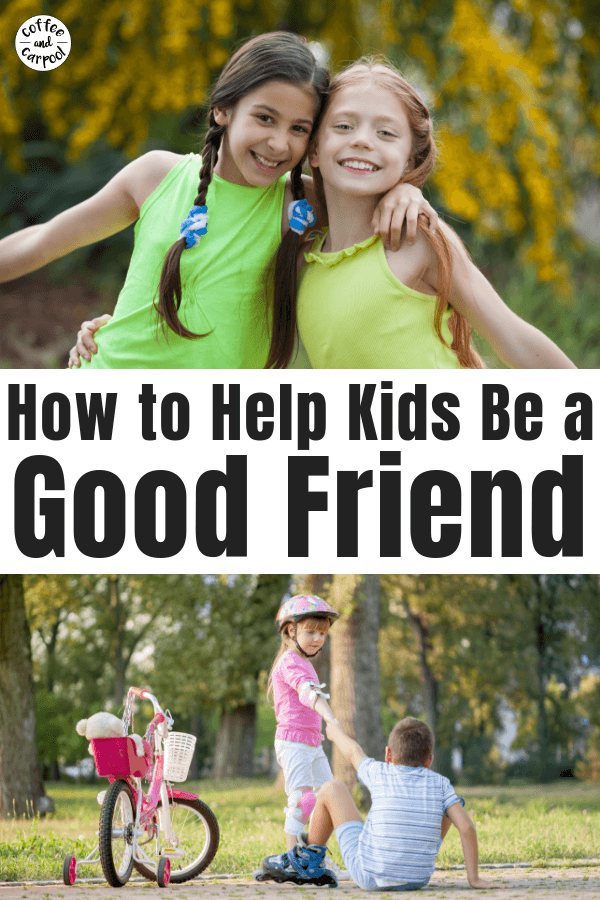
Leave a Reply